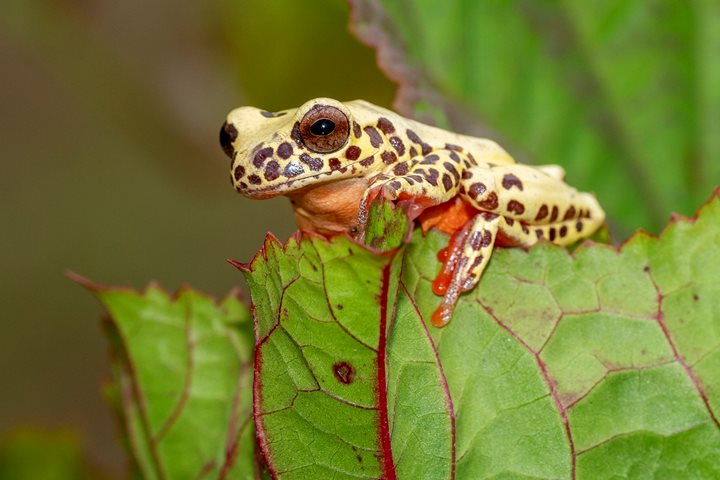The day began perfectly. Out in skiffs soon after sunrise and soon after that, several sightings of Macaws! Between the three groups we saw three species: Blue and yellow macaw, red-bellied macaw, and Scarlet Macaw. They were drawn to this area due to an abundance of palm trees. The birds were close enough to get wonderful looks at their amazing colorations (with binoculars, of course). From there, the amazing sightings continued. Chestnut-eared aracaris with their vibrant bill colors that looked freshly painted, sat on a branch eating insects. Squirrel monkeys dashed around eating the yellow machinpuro fruit. And the high-pitched squeaks of the saddle-backed tamarins gave away their location. They may be small, but they are speedy and agile as well. They raced up and down branches and leapt seemingly impossible distances. Finally, we visited the home of a family of night monkeys. They were peeking out of the hole in their hollow tree, probably ready for a rest after an active night.
We were ready for a rest after an active morning and enjoyed the middle part of the day on board hearing talks about medicinal plants, pollination, and a demonstration from our cabin boys on how they create the fun towel “origami” that surprises us on our beds on a daily basis.
In the late afternoon we boarded our skiffs again to explore the Pacaya River. This river leads to several interconnected lakes that we got to through “shortcuts.” Not only do the fish move into the flooded forests this time of year, but so do we. Our skilled skiff drivers maneuvered us between the trunks of trees and around lianas that in a different time of year we would have to walk through. But since it is the flood season, these amazingly adapted trees withstand 10 - 40 feet deep water around their trunks and survive just fine. One of the inhabitants of this area that made our day was the hoatzin, a large, prehistoric-looking bird related to the cuckoos.
Tonight we did not try to get “home” before dark. Instead we purposely stayed out to watch (and listen to) the change from day to night. As darkness fell, the flying birds were replaced by bats, and the birdcalls were replaced by a chorus of frogs that sounded otherworldly. On our way back to the ship, our alert naturalists spotted the red eye shine of many caimans… and we of course went over to take a look.
Now it is dinnertime, the ship is motoring towards tomorrows destination and we (or at least this author) are off to dinner with pisco sour in hand.









